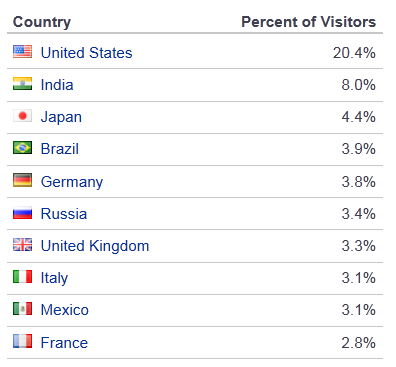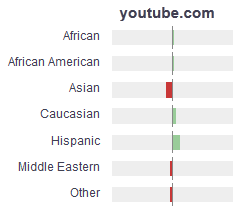danah boyd, a distinguished author on studies of the Internet, whom we first studied in her writing “White Flight in Networked Publics?” and “Why Youth (Heart) Social Network Sites” also writes about Facebook’s Privacy Trainwreck after it’s 2006 introduction of the newsfeed. I decided to study this article because many users don’t remember Facebook’s technology pre-news-feed. What’s interesting about Facebook’s introduction of new features & re-designs is that it’s almost always contested by most users before it is desired and loved. Those of us who have used Facebook for a long time have seen many statuses after the release of each feature denouncing it.
danah boyd, in her article brings up many key points about the news feed we now have very few complaints about, especially relating to privacy. danah points out that prior to the news feed, all the information displayed on the newsfeed still existed, but was just not aggregated. danah points out a very interesting note: that the newsfeed by aggregating social activities creates a culture that makes people feel left out for not having been in a social activity. Marshall McLuhan, talked about the notion of a global village, and stated that even as we become closer, sometimes we become farther. While Facebook news feed is now much more personalized and algorithmically calculates relevant posts based on social relationships and how close you are with a certain person, the initial news feed simply listed posts backwards on time of all friends. Facebook has handled privacy in an amazing manner since the publication of this article: by allowing post visibility, limited visibility, and by socially aggregating relevant content.
User: ‘Who do I talk to the most?’
Cobot: ‘Peter.’
User: ‘Who does Peter talk to the most?’
Cobot: ‘Dan.’
User (to self): WHAT!?!? Why does Peter talk to Dan more than me? *$%& him, I’m not
talking to Peter anymore . .
The above post is an example of how Facebook is used to creative negative self-confidence for individuals. Another popular phenomenon is FOMO (Fear of Missing Out) created by social networks when individuals see events on social networks. Facebook has done a great job of fixing many of the privacy issues (social convergence, weighting friends) that danah claims as social issues.

Facebook Newsfeed Settings: Now








 A few years ago, I was able to recognize that HDR photos were often prettier than reality. When reading Daryl Pranada’s brief on
A few years ago, I was able to recognize that HDR photos were often prettier than reality. When reading Daryl Pranada’s brief on 
 ties which offer technology, but not imply focus form many different cyber cultures. For example, Reddit and 4Chan both embody various cyber cultures: from simple humor to interesting fetishes. Whatever one’s interest, Reddit fosters relevancy and user interaction through avatars and PM’s. Nayar states that culture and technology are linked (5). Without ICT’s, it is quiet clear that much globalization would not occur. In fact, I’ve seen through out the years, the interaction of many cyber cultures increase through decreases in barriers: i.e. new messaging and chatting features that automatically live translate from one language to another. A great example is Phillip Rosedale’s Second Life which platforms a virtual world with avatars that imitates real-life encounters in an rendered simulation. While Nayar’s article is a little antiquated in stating that Amazon.com is perhaps the most successful web company today, Nayar does make a point of what companies tend to survive global bubbles: those that fit the mold of being able to identify with long-term globalization of capitalist orders and global trade. Nayar also brings up the barrier of technology itself however which as we learned in Comm-12 at Santa Clara is a prevalent issue of economic scale. While, the resources to interact with one another are becoming more easily accessible, the apparatuses to do so still remain with the haves, rather than the have nots. While the haves, have more access, the have nots remain further behind in terms of economic growth and opportunities as well as social opportunities. Nayar’s article continues to talk about disconnect of identity: however, I believe that this is also antiquated to three-to-four years ago. Nayar, of course, takes the standpoint that there isn’t a disconnect; however, the latest technologies try to use real identities as promotion for machine learning algorithms to provide recommendations, advertising, commerce, and communication. Overall, Nayar is succinct in stating that ICT’s and the disparity between the haves and have nots is an important one to understand: however, I believe, that this is not a channel of disparity but rather an amplification of resources for both. I believe in the long run, that technologies such as AirTime, Spotify and Facebook, and Anybot are providing tools to interact in a virtual setting that best tries to replicate real-world interactions.
ties which offer technology, but not imply focus form many different cyber cultures. For example, Reddit and 4Chan both embody various cyber cultures: from simple humor to interesting fetishes. Whatever one’s interest, Reddit fosters relevancy and user interaction through avatars and PM’s. Nayar states that culture and technology are linked (5). Without ICT’s, it is quiet clear that much globalization would not occur. In fact, I’ve seen through out the years, the interaction of many cyber cultures increase through decreases in barriers: i.e. new messaging and chatting features that automatically live translate from one language to another. A great example is Phillip Rosedale’s Second Life which platforms a virtual world with avatars that imitates real-life encounters in an rendered simulation. While Nayar’s article is a little antiquated in stating that Amazon.com is perhaps the most successful web company today, Nayar does make a point of what companies tend to survive global bubbles: those that fit the mold of being able to identify with long-term globalization of capitalist orders and global trade. Nayar also brings up the barrier of technology itself however which as we learned in Comm-12 at Santa Clara is a prevalent issue of economic scale. While, the resources to interact with one another are becoming more easily accessible, the apparatuses to do so still remain with the haves, rather than the have nots. While the haves, have more access, the have nots remain further behind in terms of economic growth and opportunities as well as social opportunities. Nayar’s article continues to talk about disconnect of identity: however, I believe that this is also antiquated to three-to-four years ago. Nayar, of course, takes the standpoint that there isn’t a disconnect; however, the latest technologies try to use real identities as promotion for machine learning algorithms to provide recommendations, advertising, commerce, and communication. Overall, Nayar is succinct in stating that ICT’s and the disparity between the haves and have nots is an important one to understand: however, I believe, that this is not a channel of disparity but rather an amplification of resources for both. I believe in the long run, that technologies such as AirTime, Spotify and Facebook, and Anybot are providing tools to interact in a virtual setting that best tries to replicate real-world interactions.